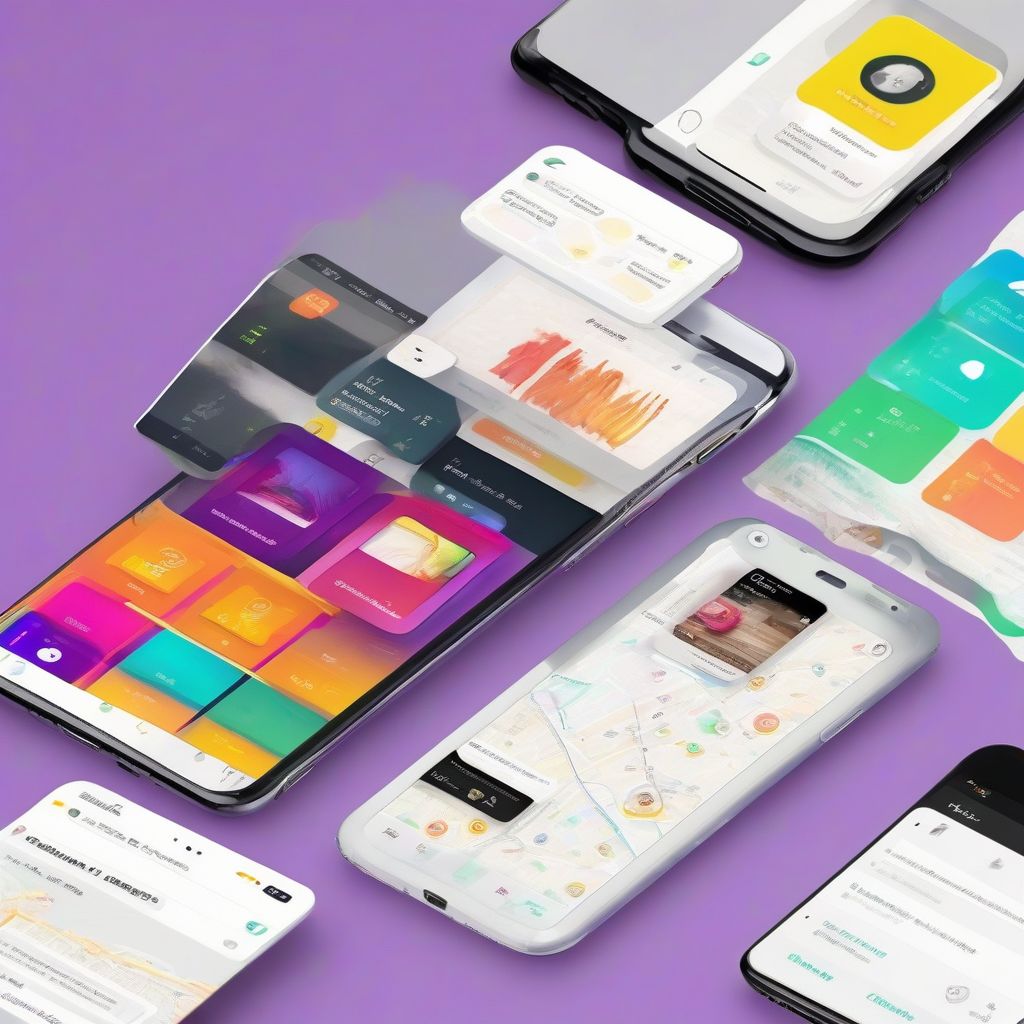Remember the days of clunky mobile apps with confusing navigation and frustrating user interfaces? Thankfully, those days are fading fast. Just like our food choices have evolved to prioritize health and flavor, mobile app design has undergone a revolution, shifting from purely functional to deeply user-centric. As a nutritionist passionate about creating smooth and enjoyable healthy eating experiences, I’m equally fascinated by how app design impacts our digital lives.
From Pixels to People: Why App Design Matters
Early mobile apps often prioritized functionality over aesthetics and ease of use. But with the explosion of smartphones and the app market becoming increasingly competitive, a simple truth emerged: users crave apps that are not only useful but also delightful to interact with. This realization sparked the evolution of mobile app design trends, putting the user experience front and center.
The Rise of Minimalism and Intuitive Navigation
Cluttered screens and confusing menus were banished as minimalism took center stage. Clean lines, ample white space, and a focus on core features became the hallmarks of good design. Apps like Google Calendar and Evernote exemplify this shift, offering intuitive navigation and visually appealing interfaces that simplify complex tasks.
The Power of Personalization
Just like a tailored meal plan caters to individual dietary needs and preferences, personalized app experiences resonate with users. By leveraging user data and preferences, apps can now customize content, recommendations, and even the user interface itself. Think Spotify curating your perfect playlist or Duolingo adapting language lessons to your learning style.
A Picture Speaks a Thousand Words: The Visual Revolution
 Visually Appealing App Design
Visually Appealing App Design
Complex data became digestible through elegant data visualizations, interactive charts, and intuitive infographics. Apps like Headspace, for example, use charming illustrations and animations to guide users through meditation sessions, making mindfulness more approachable and engaging.
The Reign of Content and Microinteractions
High-quality content became king. Apps transformed into platforms for storytelling, delivering valuable information, entertainment, and social interaction. Microinteractions, those subtle animations and responses to user actions, added delightful details that enhanced the sense of control and engagement. Think the satisfying “pull-to-refresh” animation or the subtle heart animation when you “like” a post.
The Future of Mobile App Design: What Lies Ahead?
1. The Age of Artificial Intelligence (AI)
AI is poised to revolutionize app design even further. Imagine apps that anticipate your needs before you even realize them, proactively offering solutions and personalized experiences. From voice-controlled interfaces to AI-powered chatbots, the possibilities are limitless.
2. Augmented Reality (AR) and Virtual Reality (VR)
AR and VR are blurring the lines between the digital and physical worlds, creating immersive experiences within mobile apps. Imagine trying on clothes virtually through an AR-powered shopping app or taking a virtual tour of a museum from your couch.
3. The Rise of Wearable Technology
Smartwatches, fitness trackers, and other wearable devices are extending the reach of apps beyond our smartphones. Seamless integration and data synchronization between devices will be crucial, creating a holistic and interconnected digital ecosystem.
Conclusion: Designing for the Future
Just as we prioritize nutrient-rich foods for optimal health, mobile app design must prioritize user-centered experiences for digital well-being. As technology continues to evolve, we can expect to see even more innovative and engaging mobile experiences that seamlessly integrate into our lives. By understanding the evolution of mobile app design trends, we can better appreciate the thought and creativity that go into crafting those tiny digital companions we rely on every day.
[amazon bestseller=”mobile app design”]
